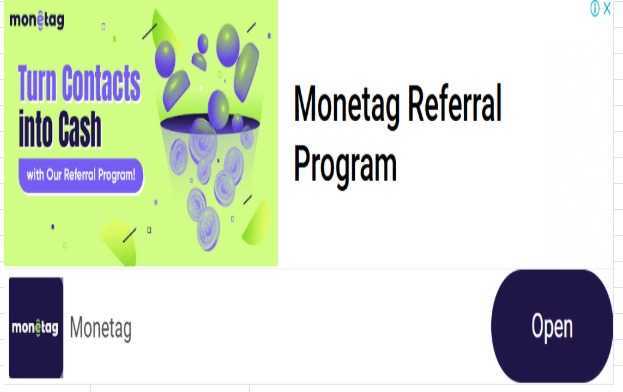PMBOK Team – Project Performance Domain: Building High-Performing Project Teams
Introduction
In the realm of project management, success isn’t solely defined by timelines, budgets, or deliverables—it’s also shaped by the people who make it happen. The Team Project Performance Domain in the PMBOK® Guide – Seventh Edition places a well-deserved spotlight on one of the most vital components of any project: the team.
Gone are the days when project management was just about task lists and Gantt charts. The modern project manager is a facilitator of collaboration, an enabler of growth, and often, the glue that holds a high-performing team together. The Team domain embraces this shift, focusing on creating the right environment and fostering relationships that help teams perform optimally.
This blog post provides a deep dive into the Team Project Performance Domain, exploring its principles, importance, best practices, and actionable strategies to help project managers and organizations build and lead teams that thrive.
Understanding the Team Performance Domain
The Team Performance Domain is one of the eight performance domains introduced in the PMBOK® Guide – Seventh Edition. These domains replace the traditional Knowledge Areas from earlier editions, offering a more value-driven, flexible, and people-centric framework for managing projects.
Definition
The Team Performance Domain encompasses the activities and functions associated with the people involved in the project. It focuses on creating a collaborative environment, developing team culture, aligning team efforts with project goals, and empowering team members to contribute meaningfully to the project’s success.
Key Elements of the Team Domain
Here are the core components that make up the Team Performance Domain:
1. Team Culture and Environment
Creating a positive and inclusive team culture is foundational. Culture influences how team members interact, make decisions, handle conflict, and engage with project goals.
Key Actions:
- Define team values and norms early.
- Promote psychological safety.
- Encourage diversity and inclusion.
2. Leadership and Team Development
Effective leadership is crucial for guiding and nurturing the team. This includes coaching, mentoring, and resolving conflicts while developing team members’ capabilities.
Key Actions:
- Use servant leadership principles.
- Encourage continuous learning.
- Delegate effectively and build trust.
3. Team Structure and Roles
Clearly defined roles, responsibilities, and reporting lines enable efficiency and reduce ambiguity.
Key Actions:
- Develop a RACI matrix.
- Assign clear ownership of deliverables.
- Communicate role expectations transparently.
4. Communication and Collaboration
Open and transparent communication fosters collaboration, reduces misunderstandings, and aligns the team.
Key Actions:
- Use appropriate communication tools and methods.
- Encourage feedback loops.
- Hold regular stand-ups and retrospectives.
5. Conflict Management
Healthy conflict can spark innovation, but unresolved conflict can derail progress.
Key Actions:
- Identify conflict early.
- Apply conflict resolution strategies.
- Encourage respectful debate and dialogue.
6. Team Performance Assessment
Regularly assess how the team is functioning to identify areas of improvement and recognize high performance.
Key Actions:
- Conduct team health checks.
- Use performance metrics (qualitative and quantitative).
- Provide timely recognition and feedback.
Principles Supporting the Team Domain
The PMBOK® Guide Seventh Edition also aligns each performance domain with overarching project management principles. The Team domain is primarily supported by the following principles:
1. Build a Culture of Accountability and Respect
Encourage mutual accountability. Team members should feel responsible not only for their tasks but also for the team’s collective success.
2. Tailor Approach Based on Team Needs
There’s no one-size-fits-all. Agile, hybrid, and traditional methods may all work depending on the team’s context and the project’s complexity.
3. Focus on Leadership and Empowerment
Empowering the team rather than commanding it is the mantra of modern project leadership.
4. Enable Team Engagement and Motivation
Motivated teams are productive teams. Understand what drives your team and create an environment that nurtures intrinsic motivation.
Team Lifecycle in a Project
The journey of a project team follows a lifecycle. Recognizing and managing these stages can help ensure smoother transitions and higher performance.
1. Forming
The team is just coming together. There’s excitement, but also uncertainty.
Focus: Introductions, setting expectations, team charter.
2. Storming
Conflicts may arise as personalities clash or roles are questioned.
Focus: Conflict resolution, clarifying roles, building trust.
3. Norming
Team members start to settle into their roles and relationships.
Focus: Strengthen collaboration, refine processes.
4. Performing
The team is cohesive and productive, focusing on project goals.
Focus: Maximize performance, encourage innovation.
5. Adjourning (or Transforming)
Project is closing or team is transitioning.
Focus: Celebrate successes, gather lessons learned, reassign roles.
Roles and Responsibilities in the Team Domain
1. Project Manager
- Facilitates team development and cohesion.
- Resolves conflicts and removes roadblocks.
- Ensures team alignment with project goals.
2. Team Members
- Deliver assigned work efficiently and effectively.
- Communicate openly and constructively.
- Support team values and norms.
3. Stakeholders
- Provide input and feedback.
- Support team needs (resources, recognition, etc.).
- Help maintain alignment with organizational objectives.
4. Sponsors and Functional Managers
- Authorize resources.
- Support team empowerment and decisions.
- Help resolve escalated issues.
Key Tools and Techniques
1. Team Charter
A team charter outlines mission, values, operating guidelines, and norms. It serves as a reference point and foundation for team cohesion.
2. RACI Matrix
Defines roles: Responsible, Accountable, Consulted, Informed. Helps avoid confusion in responsibilities.
3. Collaboration Tools
Tools like Slack, Microsoft Teams, Asana, or Jira help keep the team aligned and collaborative.
4. Coaching and Mentoring
Helps individuals improve their skills and confidence while also building team cohesion.
5. Team Building Activities
Even in remote settings, structured activities can strengthen interpersonal bonds and increase trust.
Agile and the Team Domain
Agile methodologies bring a unique perspective to team performance. Agile teams are self-organizing, cross-functional, and highly collaborative.
Agile Practices that Support the Team Domain:
- Daily stand-ups to synchronize work.
- Retrospectives to identify improvements.
- Pair programming to enhance skills and collaboration.
- Servant leadership to support team autonomy.
Key Agile Values:
- Individuals and interactions over processes and tools.
- Customer collaboration over contract negotiation.
- Responding to change over following a plan.
Challenges in Managing Project Teams
Even the most well-intentioned project teams face hurdles. Here are some common challenges and how to address them:
Challenge | Solution |
Lack of trust | Foster open communication and team-building activities. |
Communication breakdowns | Set clear communication norms and channels. |
Skill gaps | Provide training, pair work, or mentoring. |
Cultural differences | Encourage cultural awareness and inclusive practices. |
Low motivation | Offer recognition, autonomy, and purpose. |
Remote or hybrid teams | Leverage technology, prioritize virtual engagement. |
Measuring Team Performance
While team dynamics can be qualitative, performance still needs to be assessed objectively.
Quantitative Metrics
- Velocity (Agile teams)
- Task completion rate
- Defects/errors
- On-time delivery
Qualitative Indicators
- Team satisfaction surveys
- Stakeholder feedback
- Observation of collaboration levels
- Retrospective outcomes
Tools
- 360-degree feedback
- Net Promoter Score (NPS)
- Team assessment models (e.g., Tuckman’s model, Lencioni’s 5 Dysfunctions of a Team)
The Role of Emotional Intelligence
Emotional intelligence (EI) is increasingly recognized as a key skill in building and leading teams.
Components of EI:
- Self-awareness
- Self-regulation
- Motivation
- Empathy
- Social skills
Project leaders with high EI are better equipped to resolve conflicts, inspire teams, and adapt their communication style to various personalities.
Real-World Case Example
Let’s consider a software development project with a cross-functional team spread across three continents. Initially, cultural misunderstandings and time zone differences resulted in missed deadlines and tension.
By applying the principles of the Team domain:
- A team charter was created collaboratively.
- Time zone-friendly stand-up meetings were introduced.
- Conflict resolution training and cultural awareness sessions were conducted.
- A shared digital workspace improved visibility and communication.
Within two months, the team showed measurable improvements in collaboration, morale, and delivery speed. This illustrates how deliberate attention to the Team domain can transform outcomes.
Final Thoughts
The Team Project Performance Domain is more than just an HR function within project management. It’s a strategic enabler of success. No matter how brilliant your project plan is, its execution depends on people. Nurturing a team environment that is inclusive, supportive, empowering, and goal-oriented is critical.
Whether you lead Agile squads or traditional project teams, the insights from this domain provide a powerful framework to unlock the full potential of your team. A great team won’t just meet expectations—they’ll exceed them.


